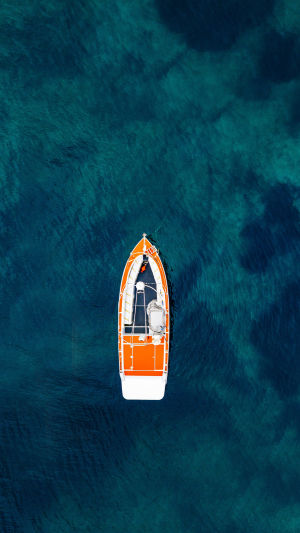A yacht is a type of advanced durable consumer goods designed for water recreation. It combines the functions of sailing, sports, entertainment, and relaxation to meet the needs of individuals and families who want to enjoy life.
Yachts can be categorized based on various criteria, including size, origin, function, and more, leading to a diverse range of types. From nimble speedboats to majestic large yachts, these vessels vary in hull designs, building materials, and propulsion mechanisms. Commonly known as motorboats, power yachts, or superyachts, these craft share the trait of being propelled by engines, distinguishing them from sailboats that harness wind power.
Powerboats encompass a broad spectrum of sizes and designs. Smaller recreational options range from hard-bottomed boats and inflatables to jet skis, catering to a variety of leisure activities. On the other end of the spectrum, luxurious superyachts and megayachts offer opulence and expansive living spaces for extended voyages.
Understanding the basic structure and components of powerboats begins with the hull. A displacement hull is characterized by its constant immersion in water, regardless of speed.
This hull type maintains its draft and displaces a significant volume of water as it moves, a key feature distinguishing it from planing or semi-displacement hulls which can lift out of the water to various extents at higher speeds. This fundamental aspect of boat design influences not only the vessel's performance but also its suitability for different maritime activities.
The advantage of displacement hulls is that they are still very fuel-efficient at low speeds (better economy) and can reach longer ranges with smaller engines. The disadvantage is that they are usually much slower than other hull types.
Trawlers, tugboats, and many superyachts use the displacement hull design.
Semi-displacement hulls are designed to make part of the hull out of the water. Unlike a full displacement hull, the semi-displacement hull is not completely in the water, but part of the hull can drive on the water at high speed (the bow is up, the transom is down, and there is some longitudinal inclination).
Displacement hulls require more horsepower and tend to have higher fuel consumption but can achieve greater speeds. This design is common among larger powerboats, including power yachts, cabin cruisers, and trawlers, with many opting for a semi-displacement hull design to balance speed and stability.
Gliding, or planing, hulls are engineered to lift the boat out of the water at high speeds, reducing the contact surface with the water and thus decreasing drag. This design requires significant horsepower to reach and maintain high speeds. Recreational powerboats, particularly those used for water sports, fishing, and high-speed cruising, often feature gliding hulls to facilitate fast, efficient movement across the water's surface. Enhancements like hull recesses can further improve a boat's gliding capability and speed.
Yachts are classified into various types based on their intended use. Leisure boats are designed for relaxation and enjoyment, offering comfort and amenities for casual cruising. Business and social boats are tailored for hosting events, meetings, or parties, providing spaces for social interaction. Racing boats are built for speed and performance, emphasizing aerodynamics and power. Fishing boats are outfitted with specific features for angling activities, including storage for gear and catches. Sports yachts, often synonymous with speedboats, are small, fast, and designed for exhilarating rides.
Each yacht category caters to different preferences and activities, showcasing the versatility and wide appeal of boating as a pastime and mode of travel. Whether seeking leisure, sport, business, or adventure, there is a yacht type to suit every maritime enthusiast's needs.
Sports yachts, with their emphasis on speed, offer an appealing combination of performance and affordability, making them particularly attractive to younger enthusiasts eager for thrilling maritime adventures. These vessels are engineered for those who prioritize velocity on the water, and their relatively low cost contributes to their popularity among a youthful demographic.
Leisure yachts represent a different aspect of yachting, aimed more at families seeking a comfortable and enjoyable way to spend vacations together. These boats are designed for relaxation and pleasure, equipped with amenities that ensure a comfortable stay on the water, making them ideal for leisurely cruises and extended trips.
For business and social engagements, yachts in this category offer a blend of luxury and functionality, making them perfect for hosting corporate events or celebratory occasions like weddings or parties. These yachts are often outfitted with high-end amenities, including hot tubs, and spacious decks, to provide a memorable and enjoyable experience for guests, emphasizing sophistication and entertainment.
Racing yachts are the pinnacle of performance and speed, built with cutting-edge materials and designs that reduce weight and enhance aerodynamics. These vessels cater to competitive sailors and speed enthusiasts, focusing on maximizing velocity and agility for racing events.
Fishing yachts are tailored for angling enthusiasts, equipped with specialized fishing equipment and features that facilitate a productive fishing experience. From fish-finders to baitwells, these yachts are designed to support both casual and serious fishing expeditions, combining comfort with functionality for anglers.
Each type of yacht caters to specific interests and lifestyles, reflecting the diverse ways people enjoy and utilize the sea for recreation, sport, business, and leisure.





